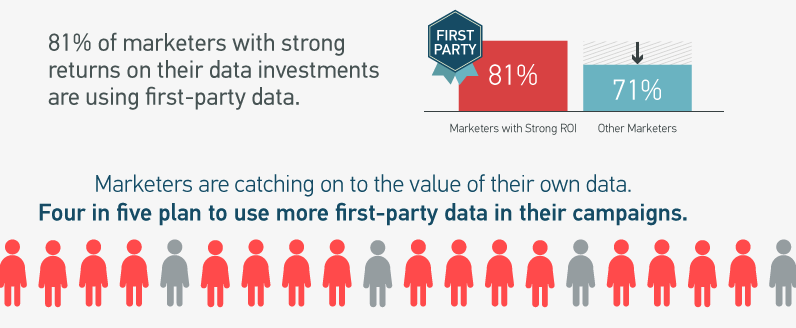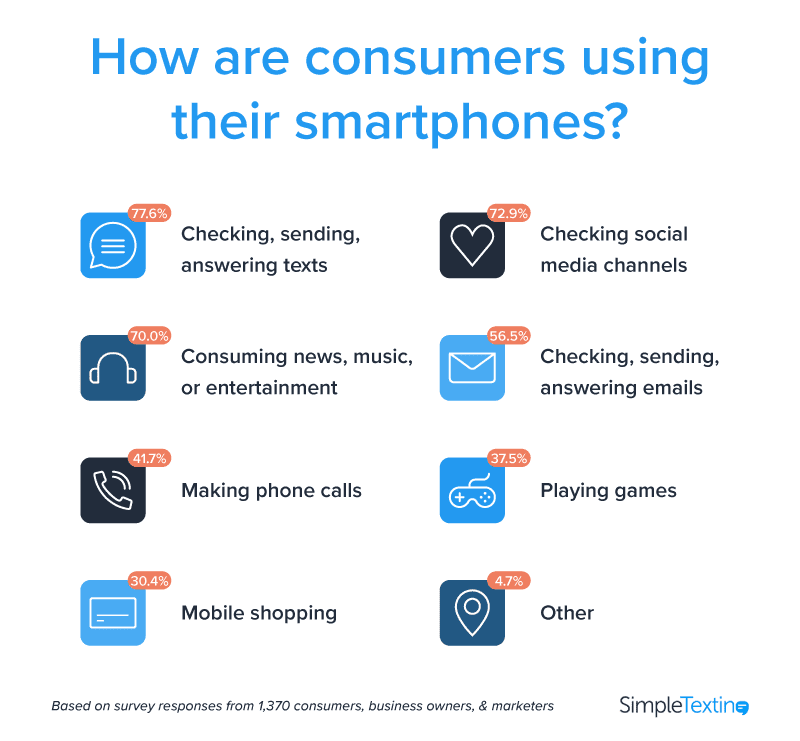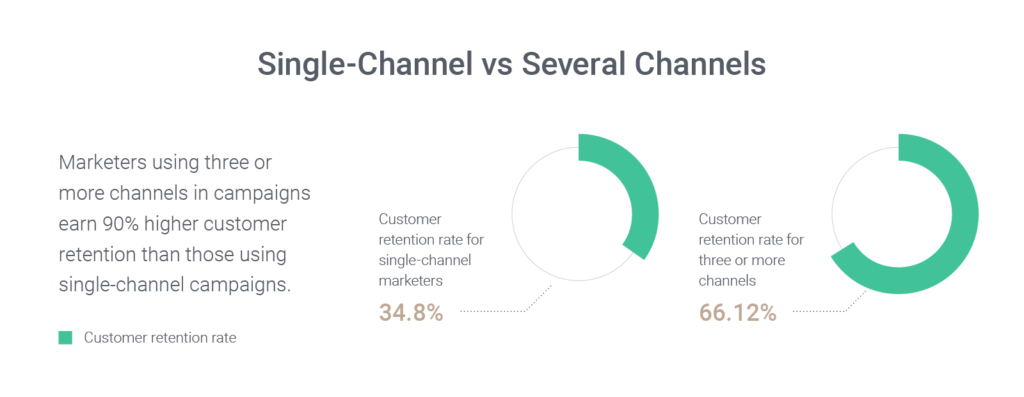Effective Direct Marketing Strategies to Grow Your Business
What is direct marketing all about? We cover four effective direct marketing strategies that can help your business' message spread to potential customers.

What is direct marketing all about? We cover four effective direct marketing strategies that can help your business' message spread to potential customers.

What’s old is once again new.
Third-party marketing data, or data you buy from outside sources, is facing its death knell thanks to concerns over internet privacy.
No surprise, then, that first party data – information that brands collect directly from their audience or consumers – is back in the spotlight.

Brands who relied on programmatic campaigns and social media advertising now want marketing channels that allow them to speak directly to their audience.
In other words, they’re focusing their marketing budget on tried-and-tested direct marketing campaigns.
Direct marketing refers to any marketing campaign that relies on a direct connection to an individual consumer, rather than through a third-party platform.
Because direct marketing refers to mostly opt-in channels, consumers actively look for and respond to your business’s promotions or ads. On the other hand, marketing campaigns on social media platforms like Facebook are not requested by your audience, which can make them less effective.
As customers are actively interested, direct marketing often includes a strong call to action that drives sales of your product or service.
For a generation of marketers that have run ads targeting niche interests and demographics, direct marketing conjures up images of shady and unsuccessful telemarketing.
The good news: today’s direct marketing strategies are way more sophisticated.
For example, direct marketing tools allow you to offer customers early access to product launches, refill orders, send cart reminders, and generally nudge people to purchase.
Here are other direct marketing channels that can help you reach your company’s target audience. You can use:
We’ll dive into the above direct marketing strategies in more detail and provide specific advice on how they can help your brand connect with your audience. (We’ll also include plenty of examples.)
Direct mail involves sending an ad to a physical address (mail or flyers). These physical mailers often have a special discount. They can also be used to announce sales, give a service reminder, or provide information about your products or services.
The argument for direct mail is simple: since so many businesses have moved to digital advertising, physical mail is cheaper than ten years ago. It also works better since less of it is sent out.
This article covers the best way to use direct mail. The TL;DR: direct mail campaigns work best for those selling high-value products–think cars and real estate.
If you fall into this category, you need to read up on the 40/40/20 rule. The 40/40/20 rule states that 40% of the performance of your direct mail marketing campaign depends on your list of contacts (who you’re sending your mail to), 40% on the offer (what’s in it for your audience), and 20% on everything else (format, design, content, etc.)
One of the best ways to reach people with your brand’s marketing? Contact them where they spend a majority of their time.
Text message-based communication is an integral part of people’s everyday lives, with some people spending as much as 5.7 hours a day on their phone.

SMS marketing refers to the use of text messages to promote a business’s products and services, as well as build customer loyalty.
Channels like SMS are particularly important now that first-party customer data such as phone numbers and email addresses are more valuable.
The first company to communicate with customers using email marketing generated a whopping $13 million in sales.
While email doesn’t deliver the same returns that it once did, you can still generate a great ROI. Similarly to text marketing, your mailing list is all yours, making it another valuable owned channel.
A lot of business owners and marketers worry that SMS and email will compete with each other, diluting their individual value.
In reality, the opposite happens. We’ve seen brands like the multi-location restaurant Blue Baker use SMS and email together to drive a 162% increase in its coupon redemptions.
It’s surprising how few marketers take advantage of the potential of events as a direct marketing tool.
When hosting an event, businesses have nearly complete control of their customers’ experience.
One example from the world of dining is a pop-up restaurant. Rainbow Room, an iconic dining venue in New York City, launched a pop-up tiki bar in 2019. They offered snacks, drinks, and – of course – festive tiki cocktails to event attendees.

Events like Rainbow Room’s pop-up offer a great way to build a relationship with prospects and existing customers.
Once you’ve decided on your direct marketing channels, you need to take action and build a strategy that works for your business. These six best practices for direct marketing campaigns will help.
With traditional direct marketing, companies would choose one approach and focus heavily on it.
Now the benefits of integrating different direct marketing channels to build an omnichannel marketing approach are clear.

For example, in one study, marketing campaigns that used direct mail and another form of marketing saw a 118% increase in response rate.
One of the criticisms of direct marketing is that it’s heavily reliant on one-way channels. Brands create campaigns, push them out, and hope they resonate. On top of this, Forbes has reported that consumers are exposed to around 10,000 brand messages per day.
It’s no surprise, then, that your audience is more likely to interact with a message that feels like it was written specifically for them. We recommend personalizing your direct marketing to improve response and conversion rates.
What does that look like? You can collect additional information on customers and send them a message with more information on a product they’re likely to benefit from. Not only will your relationship with customers improve, it’s a strategy that leads to more sales.
A lot of indirect marketing involves creating content that people will find useful, with the aim of subtly marketing your product or service. This isn’t the case with direct marketing. Instead, focus on including a relevant CTA that will generate the highest possible response from your customers.
It’s easy to assume direct marketing campaigns are a success when you see an increase in sales or leads. But sometimes your campaigns can be more or less successful than they appear on the surface.
The smartest marketers are the ones who take the time to set up detailed tracking methods.
Marketing has changed drastically, thanks to technology and the demands of more discerning, sophisticated, and impatient consumers.
Instead of blasting your subscribers with the same vague ad each week, focus on “SMART” marketing. With each offer or announcement, ask yourself if it’s SMART (Specific, Measurable, Actionable, Relevant, and Timely).
Discounts, exclusive savings, important announcements, event alerts, and useful information are valuable things to share with your customers. Consider layering in some rich media, like photos or videos, to diversify and engage your audience.
With the death of third-party cookies, direct marketing is back in the spotlight. It’s clear that the power to directly reach customers is too powerful for any brand to ignore.
In particular, we’ve seen thousands of businesses realize the advantages of direct SMS marketing. It’s being used by top-selling real estate agents, growing service businesses, successful e-commerce brands, and everyone in between.
Despite its popularity, SMS continues to be one of the most underutilized marketing channels. This presents huge upsides for companies who are willing to try it. There’s never been a better time to get started than now.
We encourage you to sign-up for a 14-day free trial of SimpleTexting and see what all the hype is about.
Drew Wilkinson is the Head of Marketing at SimpleTexting. Drew has more than a decade of experience managing successful integrated marketing programs to build brands, raise awareness, and generate demand.
More Posts from Drew WilkinsonCut through the confusion surrounding how to write a marketing email with this easy step-by-step guide.
ReadWant to know exactly how your retail brand is performing? Here are the most important key performance indicators (KPIs) in retail to help your business thrive.
ReadStart a text marketing campaign or have a 1-on-1 conversation today. It's risk free. Sign up for a free 14-day trial today to see SimpleTexting in action.
No credit card required